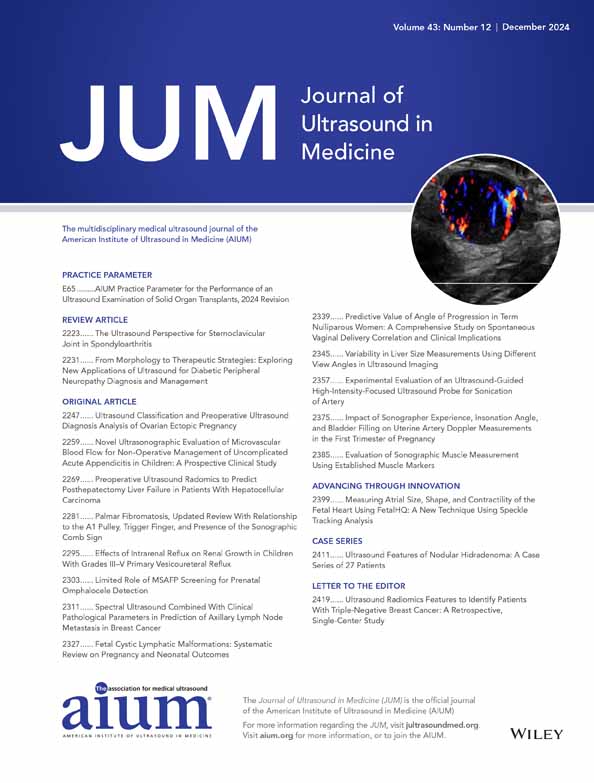Evaluation of Sonographic Muscle Measurement Using Established Muscle Markers
This manuscript contains parts of the medical thesis of Alexander Schwarz. Maurice Michel and Wolfgang Maximilian Kremer are supported by the Clinician Scientist Fellowship “Else Kröner Research College: 2018_Kolleg.05.”
The authors disclose no potential financial or non-financial conflict of interest. This work was not supported by any grant or funding source.
No funding was granted for this project.
Abstract
Objectives
Loss of muscle quantity and function is associated with frailty and reduced quality of life. Sonography is a simple option to quantify muscle mass, which could be included into routine diagnostic workup. This study was designed to prospectively evaluate sonographic measurement and to compare it with established measurements of muscle quantity and function.
Methods
Between March 2020 and May 2022, 723 patients were enrolled in the study. Psoas muscle area index (PMAI) and psoas muscle thickness height index (PMTI) were quantified. Thigh muscle thickness indices (TMTI) were either measured without compression (fTMTI) or under compression (cTMTI). Variation coefficient (VC) as well as intra- and inter-observer reliability were analyzed. The reliability and reproducibility of the sonographic morphometry were assessed using two examiners. Sonographic morphometry was compared with established measurements of muscle using computed tomography and hand grip strength, respectively.
Results
In 156 patients, sonographic indices were compared with corresponding CT indices. Of the 723 patients included, sonographic indices were compared with hand strength in 429 patients. Interobserver and intraobserver variability showed better results for the femur indices than for the psoas indices (correlation coefficient: 0.8697/0.9118 vs 0.7502/0.7319). Psoas muscle indices correlated best with the reference standard of the SMI. The optimal cut-off for each muscle index for determining muscle loss according to the SMI and hand grip strength was calculated.
Conclusion
Sonography can simplify muscle measurement and should be used in the future. Sonographic muscle indices have the potential to simplify evaluation, especially in risk groups such as patients with liver cirrhosis or other wasting disorders.
Open Research
Data Availability Statement
The data that support the findings of this study are available from the corresponding author upon reasonable request.




